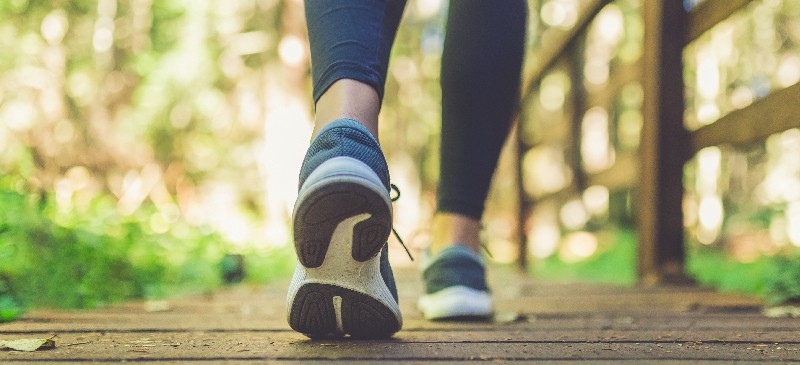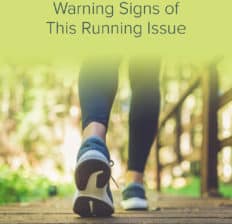This Dr. Axe content is medically reviewed or fact checked to ensure factually accurate information.
With strict editorial sourcing guidelines, we only link to academic research institutions, reputable media sites and, when research is available, medically peer-reviewed studies. Note that the numbers in parentheses (1, 2, etc.) are clickable links to these studies.
The information in our articles is NOT intended to replace a one-on-one relationship with a qualified health care professional and is not intended as medical advice.
This article is based on scientific evidence, written by experts and fact checked by our trained editorial staff. Note that the numbers in parentheses (1, 2, etc.) are clickable links to medically peer-reviewed studies.
Our team includes licensed nutritionists and dietitians, certified health education specialists, as well as certified strength and conditioning specialists, personal trainers and corrective exercise specialists. Our team aims to be not only thorough with its research, but also objective and unbiased.
The information in our articles is NOT intended to replace a one-on-one relationship with a qualified health care professional and is not intended as medical advice.
Do You Suffer from Excess Supination? Warning Signs & Remedies for This Running Problem
May 3, 2023

Both supination and pronation are terms used to describe the rolling motion of the heels and feet during the body’s gait cycle, which takes place as we run or walk. Supination describes the rolling outward motion of the foot, therefore oversupinators don’t roll their feet inward enough.
Excess supination is also called “underpronation” — since supination is the opposite of pronation of the foot (rolling inward). Both oversupination and overpronation put too much stress on the underneath or outside edges of the foot, often leading to leg pains.
For most adults, too little supination is usually more of a problem than too much, but oversupinating the foot can also lead to complications. Who tends to struggle with supination problems most often? Runners with high arches (the opposite of “flat feet” or collapsed arches) and tight Achilles tendons tend to be underpronators/supinators.
Some of the aches and pains associated with supination abnormalities include:
- rolling or spraining the ankle
- developing “hammertoes” (clawed toes)
- Achilles tendinitis
- running injuries like plantar fasciitis
- shin splints
- iliotibial band syndrome affecting the knees
- general instability and weakness
The reason underpronation causes such an array of problems is that the muscles in the legs and feet become trained to push the foot away from the ground with mostly the outer toes/pinky toes. Considering these are generally weak areas of the feet, they tend to bear more weight and pressure than they can handle, sometimes causing scar tissue to form.
Other overuse injuries can occur, too.
You can see why it’s not just the feet that are impacted by supination or related postural problems — but can contribute to muscular compensations that wind up affecting the entire body.
What Is Supination?
Supination (underpronation) is the insufficient inward rolling of the foot after landing on the ground. Compared to those with “normal,” healthy posture of the lower body, those with oversupination roll the foot outward too much (less than 15 percent of an inward roll when landing). This causes the ankle and only a small portion of the outer toes to absorb shock when the foot hits the ground, often triggering pain in the ankle, foot and lower leg.
As the body moves, in order to accept weight onto one leg and propel forward, a shift in weight must occur at the feet, knees and hips. A natural amount of supination occurs during the push-off phase when propelling forward.
Supination helps the heel lift away from the ground, which brings the forefoot and toes down to land in a way that moves the body. However, too much supination contributes to common running injuries due to instability in the ankles.
Weak ankles set the scene for postural problems, as well, like too much pressure applied to susceptible areas of the lower legs and higher risk for spraining.

Preserving proper alignment through the midline of the body, all the way from the head to the toes — by keeping the feet symmetrical and rolling them properly — is crucial for learning normal weight transference, which protects the whole body, including the spine.
Causes and Symptoms
Some of the reasons that people develop abnormalities related to pronation, supination, dorsiflexion and other motions of the feet or legs include:
- Genetics (genetics affect the length of the legs, width of the feet, stability of the ankles and curvature of the foot’s arches, for example)
- Walking on flat, hard surfaces (rather than natural terrain)
- Wearing worn-out shoes or those that are unsupportive
- Muscular compensations due to poor posture in the legs, sacrum and spine
- Old injuries, including ankles sprains, stress fractures in the legs or tendon tears, which can leave scar tissue behind that causes instability
- Poor form when running or exercising
- Overuse, including exercising too much or standing for long periods
- Limited range of motion and stiffness due to aging
- Loose ligaments or loss of cartilage in the joints of the feet or ankles (such as those of the subtalar joint)
- In some cases, leg discrepancy (legs are different lengths)
- Weakness in the ankles or lower body from too little activity (a sedentary lifestyle)
Here are some common signs that you’re likely an over-supinator (underpronator)
- Frequent ankle sprains
- Pain underneath the feet (in the ball of the foot) or pain often in the ankles
- Clawed toes/hammertoes
- Throbbing or weakness gets worse when running, walking, exercising or standing for a long time
- Dysfunctional musculoskeletal problems in the ankles, calves, outer thighs or knees
- Swelling in the ankle, foot or heel — sometimes the toes are affected as well and develop calluses or bunions
- Loss of functionality and reduced range of motion in the lower body
Supination vs. Dorsiflexion
- Supination and dorsiflexion are terms related to motion and stability of the feet and ankles. (They can sometimes also be applied to other body parts that bend back, like the hands)
- Deviations (abnormal amounts) of ankle supination or dorsiflexion are usually used to describe form and postural problems that cause common running injuries when the foot strikes the ground. These can include injuries like plantar fasciitis, shin splints, runner’s knee, heel spurs and Achilles tendon pains, among others.
- While supination describes the outward rolling motion of the foot, dorsiflexion describes the bending backward of the foot. Dorsiflexion decreases the angle between the foot and the ankle. In other words it means the toes are lifting up and away from the ground, toward the ankle/body.
- Proper dorsiflexion is also needed to bring the knees over the ankles, such as when bending over, squatting or jumping forward.
- Abnormal dorsiflexion, or backward flexion of the foot, is a common problem related to not only running injuries, but those caused during other sports/exercises. Proper mobility of the ankle is crucial for allowing the body to propel forward, especially when jumping, sprinting or running quickly.
- Without enough ankle dorsiflexion, it’s also hard to sustain proper form when performing resistance training using the knees, such as squatting or lifting weights. The torso can’t remain vertical due to stiffness in the ankles (too little dorsiflexion), therefore you can’t keep a neutral spine. The knees can also cave in, which adds stress to the back.
- On the other hand, too much dorsiflexion is also problematic. Stability is equally important in the ankles, because too much motion due to weakness in the muscles and joints of the feet can contribute to ankle rolling or spraining, along with symptoms of runner’s knee.
Conventional Treatments
If your orthopedic, physical therapist, trainer or another doctor sees signs of abnormal supination or dorsiflexion in your feet, she or he will likely recommend improving your form and wearing more supportive shoes with inserts. Changing your sneakers/shoes when exercising is usually the first step, which makes orthotics even more effective.
Orthotic inserts used in sneakers or shoes consist of arch support and sometimes a lifted heel to control the rolling-forward motion of the foot. They can take pressure off the small toes and help stabilize the ankle. This is beneficial for protecting the knees and back during movements such as running or lifting weights.
Consider using orthotics if your doctor thinks they might be helpful for improving comfort during standing for long periods, lower back pain relief or reducing heel pain.
Depending on how severe your supination problem is, your doctor might also recommend physical therapy. Physical therapy can “reteach” your muscles and joints how to distribute your weight in a healthier way, starting from your feet upward, allowing you to sustain proper form all the way through your sacrum, pelvis and spine.
5 Natural Ways to Create Proper Supination
1. Fix Your Form
Here are some tips for helping you to correct your stance, which is the groundwork for learning proper running/walking form. Proper form and posture through the spine are especially important when adding extra pressure or weight to the feet, such as when you’re lifting weights or sprinting very fast.
- When running or walking fast, aim to lower the feet with a soft landing. Some try to image “running on eggshells” or attempting to run on water. Remain light on your feet instead of pounding the feet too hard onto the ground.
- Focus on landing closer to your midfoot, rather than at the back of the heel. Try to land with a mostly flat foot, attempting to avoid too much curving of the toes inward or outward or landing too much to the side of the foot.
- Slightly increase your cadence, and potentially shorten your stride to keep proper form in the feet and legs.
- Run with upright posture through your back, and stay relaxed.
2. Stretch to Loosen Tight Muscles (Including the Ankles)
Supinators should do extra stretching for the calves, hamstrings, quads and iliotibial band (basically the whole leg). Gently stretching/mobilizing muscles in the legs helps break up adhesions and allows you to sustain proper form more easily. Stretching the ankles can also improve dorsiflexion, or ankle mobility/stability.
Many soft tissue therapists and physical therapists recommend starting any activity by massaging sore feet, loosening the ankles and stretching tight calves. Since weak, stiff ankles are often one of the major contributing factors that cause supination problems, you can also add some of these leg stretches to your regular workouts:
- Use a foam roller on the floor, positioning your body on top so the roller is under your calves, then moving back and forth gently. You can practice the same on the back or sides of the calves too. Roll the area, and hold tender spots for 30 to 60 seconds, repeating up to five times every day. This should be done right before stretching.
- Try massaging the fascia (soft tissue) in the underpart of the feet with a tennis ball under the foot as you roll around while applying mild pressure.
- Get into pushup position, and then walk your feet forward slightly to come onto the balls of your feet (holding an upside down “V” with your body). Lift the heels away from the ground as you balance on the balls of your feet, and then lower them back down again. Repeat about 10 times, more than once a day if you’d like.
- As you lay on your back, lift the legs in the air, and flex the ankles back and forth. Or make small circles (turning toes toward your body and away). Repeat for several minutes.
- Place your toes up against a wall, tilting the toes back toward the body. This releases the ankles and opens up the calves.
- Use a resistance band (also known as exercise band) wrapped around the ankle to gently pump and improve ankle flexibility.
- Do basic heel raises by raising and lowering your heels and toes to the ground, then back up. Do 10 to 15 at a time. Try using a step if you’d like.
- Sitting up on one shin, bend the opposite knee, and slowly bring the knee past the ankle, rocking the knee back and forth to improve dorsiflexion.
- Stand with straight legs, and bend forward from the waist to touch the floor or shins. This helps stretch the hamstrings. Hold for 20 to 30 seconds. You can also keep your legs wide apart with toes facing outward slightly to loosen the inner leg and hamstrings.
3. Strengthen the Leg Muscles for More Support
Strength-building leg exercises to help reduce muscular weakness in the ankles and calves include:
- Squats — All types of squats require proper mobility and stability in the ankles (dorsiflexion) and also increase strength in just about every part of the legs. Try basic squats or squatting while lifting weight overhead. Keep the tailbone tucked and core tight to protect the back.
- Lunges — Side lunges, lunge dips or lunge twists.
- Crab crawls — Bend your knees, and bring your hands behind you, squatting down in front of your arms. Use your hands on the ground to help you stretch the ankles back and forth to increase range of motion. You can stay in this position while stretching the heels and toes.
- Calf raises — Perform gentle calf raises by lifting your heel off the floor, then reversing and lifting/pointing the toes toward the ceiling. Make sure you feel a stretch in your calf muscle. Hold for 30 seconds, three times per leg.
- Doing any type of burst training, HIIT workouts or sprints (good for the whole lower body).
4. Wear the Right Shoes (Not Worn-Out Sneakers!)
Podiatrists usually recommend more flexible, lightweight sneakers for underpronators, especially those who spend lots of time on their feet (including runners or those who do lots of brisk walking). Lightweight shoes can withstand more motion of the ankle while still supporting the feet, especially those with flexible inner edges.
For people with wobbly, weak ankles, higher-top sneakers that stabilize the ankles might be a better choice.
Signs of underpronation/supination will show up in your sneakers or shoes, usually causing the outer edge of the shoe to become flimsy more quickly. Replace your sneakers regularly, especially if you exercise or run often. To see if you’re due for a new pair, place your shoes down on a flat surface, and look for the outer edge to tilt outward.
In addition to wearing the right shoes, consider using some of these inserts:
- Orthotic inserts
- Inserts to lift the heels (deep heel cups)
- Lateral insoles that stop foot rolling
You may also want to consider easing in to barefoot running — a phenomena growing in popularity among those with recurring running injuries. Running barefoot may seem even riskier than wearing the wrong sneakers, but it actually helps the feet learn proper form more easily, builds strength throughout the ankles and feet, and helps increase natural range of motion (supination and dorsiflexion).
5. Begin Exercise Gradually and Rest to Prevent Injuries
If you’re new to more vigorous types of exercising — such as running, hiking or walking uphill — or spending more time on your feet, try to keep these tips in mind:
- Aways warm up with a dynamic stretch (described above). Loosening the ankles and calves is most important.
- Set a goal to practice consistently, but give yourself rest in between to avoid adding too much stress to connective tissue. If your feet, ankle or leg muscles become too fatigued or swollen, you’ll be more likely to develop scar tissue and fall into improper form.
- Incorporate burst training and cross-train using different exercises to strengthen all over, instead of only certain leg muscles.
- Choose the right sneakers and shoes. (I can’t stress this enough.)
- Watch out for uneven or hard surfaces that may make your form and foot pain worse.
- Listen to your body. Take time off if pain worsens and spreads up the legs.
- After workouts, icing, massaging your calves and feet, plus foam rolling are simple ways to recover and help prevent swelling and tightness.
Precautions
If foot/ankle pain gets worse and lasts for more than several days or you find that the exercises above don’t help prevent ankle rolling, talk to a doctor about correcting your stance with orthotics.
Always be careful when beginning any new exercise program, watch out for signs of inflammation and overuse, and consider seeing a therapist who specializes in soft tissue therapies if supination/dorsiflexion is an ongoing problem.
Final Thoughts
- Supination and pronation are terms used to describe the rolling motion of the heels and feet as we run or walk forward. Supination describes the rolling outward motion of the foot, while pronation describes the rolling inward. Excess supination is also called “underpronation,” a less common problem compared to overpronation.
- Signs and symptoms of oversupinating include ankle, leg or heel pain; frequent rolling/spraining of the ankles; calf weakness and tightness; reduced range of motion when exercising or lifting weights; and loss of functionality.
- Natural ways to improve supination include exercising and stretching the ankles, calves and lower body; wearing proper shoes/sneakers; using proper shoe inserts (orthotics); and correcting your form when running.













